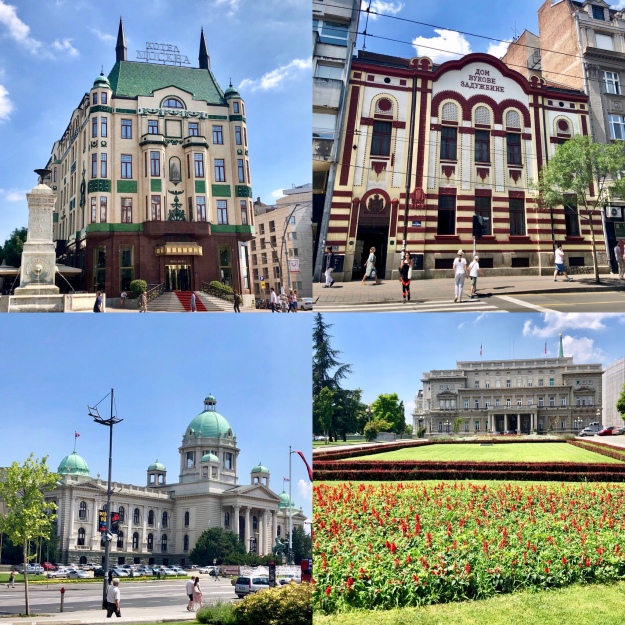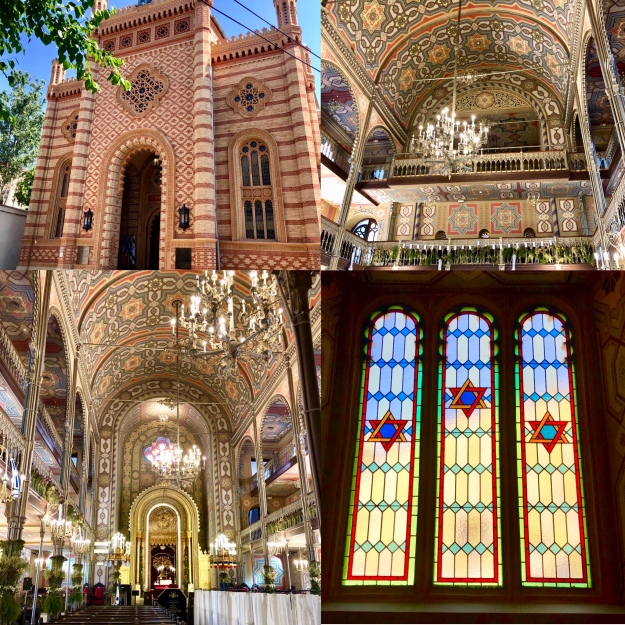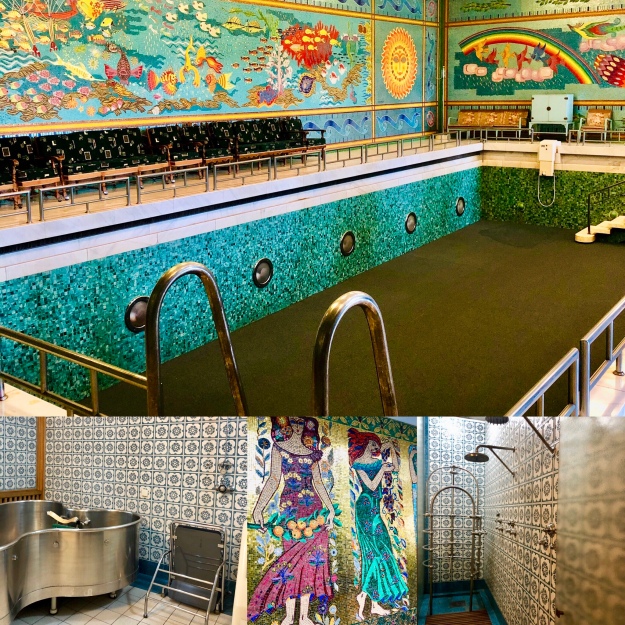I have continued my travels around Belgrade over the past few days which of course included a food walking tour – such an excellent way of discovering a city, learning about the history and of course sampling the best of the local food as you go.
A brief visit to the former residence of Princess Ljubica. Mostly this is a furniture museum now but what makes it interesting is that it was built just as the Ottoman Empire in the region was starting to decline and Christianity was rising. As a result the design, furniture and clothes in different rooms are an eclectic mix of Biedermeier European influence and ongoing Ottoman style eg. the curved area for meeting guests and drinking tea.

Princess Lijubica’s former residence
We started the food tour at the ? Restaurant – one of the oldest in the city. The interior is pretty special and I especially liked the original oak carved tables and the typical Ottoman style “half chairs”. Of course the day starts with Turkish coffee plus a nip of plum brandy. Then the waiter mentioned that the the Burek (a filo type pastry with a local savoury cheese filling) had just come out of the oven – so of course it would have been rude not to try that. After that the ginormous Skadarskarlijska sausage – a bargain at less than two dollars and sold from the best hole in the wall in town.

The very old ? Restaurant and a fresh, hot and tasty burek for brekkie
Is there ever a bad market in any Balkan city or town? No – they always have the freshest and in season food and people still like to shop here rather than in a supermarket.

In season fruit and veg at one of the 22 Belgrade markets
More wandering around took me to past the famous Mockba Hotel and the parliament buildings. One of my guides told me that last year she was taking a group of 40 Iranians around and their translator asked that they have a ten minute stop at this hotel for pictures etc. She thought this was odd and it is not easy to stop there but she complied. Ten minutes later only 10 people had returned to the bus. The translator said they must have decided to walk to their hotel…..they never came back!

Hotel Mockba, a beaux arts building and the Parliament House in Belgrade
I also came across a little street art. There are two football teams in Belgrade – The Partisans and the Red Star. This area was a stronghold of the partisans and you can tell their street art as it is always in black and white. I didn’t get to see any of the Red Star work – they don’t operate in the same locales for obvious reasons!

Close to my hotel is the Saint Sava Church – one of the biggest orthodox churches in the Balkans. Stunning from the outside but I was disappointed to find that the interior dome was being renovated. But then someone said it was worth taking a look a the crypt which had just been completed. Well I’ve been to a few crypts in my time and they are usually dark and dirty and full of bones – and then there is this one…..wow! So glad I went down there.

Saint Sava church exterior


Wall paintings in the crypt of Saint Sava Church
Next stop was the recently renovated Museum of Serbian history which was a mixture of archaeological finds (a big Roman settlement here as it was kind of at the edge of one part of their empire) plus Serbian artists and some European art. As usual I have picked some favourites – below are all portraits of strong and interesting women!

Susie’s selection of art from the National Museum of Serbia
I also really liked the work of the Serbian artist Uros Predic. These are Fugitives from Herzegovina and Boy at his mother’s grave

And I was totally wowed by this marble sculpture of woman with a veil – how do they do that?!?!

Veiled woman – in marble
Also close to my hotel was the Nikola Tesla museum. Of course being very ignorant about all things science the only reason I know his name relates to the electric car company named after him by Mr Musk. Actually he doesn’t have anything to do with cars really. He was born in Serbia although lived much of his life in the US where he was able to try and patent his ideas. His big invention was the oscillating transformer (you will need to look that up because even after the explanation I couldn’t understand it although I think one of the benefits is the ability for a washing machine to spin as fast as it does?) and he is also now also credited with the invention of the wireless. When Marconi claimed this invention Tesla sued on the basis that this belonged to him and eventually won the case BUT that was 40 years after he died so no-one remembers him for that. It’s a cruel world!
I did get a kick to see how involved he was with the Niagara hydro electric plant design (he worked for both Westinghouse and Edison) – as I have spent a fair bit of time in Buffalo in my time:)

Nikola Tesla Museum
Another unexpected place of interest was the interior of the National Bank of Serbia. I had not realised the degree of hyperinflation in Serbia between November 1993 and and January 1994. In November 1993 1 million dinar equaled 1 Deutschmark by January 1994 that 1 DM equaled 5 Trillion dinar! My guide remembered her mother carrying money around in a suitcase when she went out to buy bread. Apparently all this was caused by a corrupt banking system ……

The Serbian bank then decided to issue the best note of all – in my opinion…..I just wish they would produce more of them – many many more…..






























































































